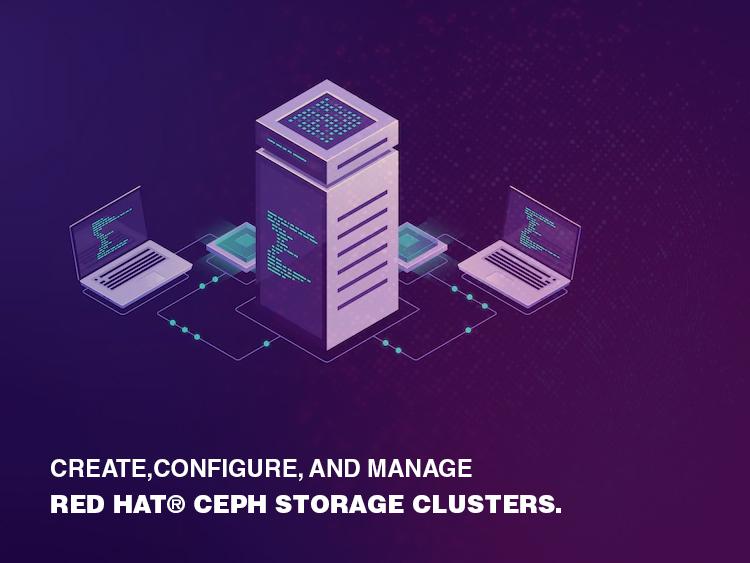_LxXU2oR6.jpg)
Red Hat Certified Specialist in Ceph Storage Administration
Cloud computing provides shared internet access to resources like storage and applications, housed in global data centers.
Duration
12 DAYS
Lectures
12+
Projects
2

Course Overview
Cloud computing involves accessing computing resources via the internet. These resources are hosted in data centers worldwide and available to any connected user or device.
Course Curriculum
• Install Red Hat Ceph Storage Server on both physical and virtual systems
• Be familiar with the Ansible installation files for Ceph
• Be able to install a Ceph Storage Server using Ansible
• Be able to change a Ceph Storage Server configuration
• Add monitor (MON) nodes and object storage device (OSD) nodes
• Configure a replicated storage pool
• Store objects in storage pool
• Store objects within a namespace within a storage pool
• Create and configure erasure-coded pools
• Create an erasure-coded pool profile with specified parameters
• Upload a file to an erasure-coded pool
• Change default settings in the Ceph configuration files
• Manage Ceph authentication
• Create a Ceph client with restricted read or write access to MONs, OSDs, pools,and namespaces
• Create a RADOS block device image
• Obtain information about a RADOS block device image
• Map a RADOS block device image on a server
• Use a RADOS block device image
• Create an RBD snapshot
• Create an RBD clone
• Configure RBD mirrors
• Deploy a RBD mirror agent
• Configure one-way RBD mirroring in pool mode
• Configure one-way RBD mirroring in image mode
• Check the status of the mirroring process
• Import and export RBD images
• Export a RADOS block device to an image file
• Create an incremental RBD image file
• Import a full RBD image file
• Import a full RBD image file updated with an incremental RBD image file
• Deploy a RADOS gateway
• Deploy a multisite RADOS gateway
• Provide object storage using the Amazon S3 API
• Be able to create a RADOSGW user that will use the S3 client’s commands
• Be able to upload and download objects to a RADOSGW using the S3 client commands
• Export S3 objects using NFS
• Provide object storage for Swift
• Be able to create a RADOSGW user that will use the Swift interface
• Be able to upload or download objects to a RADOSGW using Swift commands
• Create a Ceph file system
• Mount a Ceph file system on a client node, persistently
• Configure CephFS quotas
• Create a CephFS snapshot
• Be able to create a bucket hierarchy in a CRUSH map that can be used in an erasure profile or a replicant rule
• Be able to remap a PG
• Be able to remap all PGs in a pool for an optimal redistribution
• Manage MON and OSD maps
• Be able to monitor and change OSD storage limits for monitoring available space on an OSD
• Determine the general status of a Ceph cluster
• Troubleshoot problems with OSDs and MONs
• Specify and tune key network tuning parameters for a Ceph cluster
• Control and manage scrubbing and deep scrubbing
• Control and manage recovery and rebalancing processes
• Control and manage RAM utilization against I/O performance
• Troubleshoot client issues
• Enable debugging mode on RADOS gateway
• Optimize RBD client access using key tuning parameters
• Integrate Ceph using both Glance and Cinder
• Identify key Glance configuration files
• Configure Glance to use Ceph as a backend to store images in the Ceph cluster
• Identify key Cinder configuration files
• Configure Cinder to use Ceph RBDs for block storage backing volumes
Course Schedule
| Venue | Starting Date | Duration | Fees |
|---|---|---|---|
| Mohammadpur | 2024-09-01 | 12 DAYS | 30000.00 Tk |
Admission Is Going On
Enroll now to any of our Offline (On- Campus) or Online (Live Class) courses as per your suitable time.
Call This Number: 01958025050

_l8Gpn7F2.jpg)




